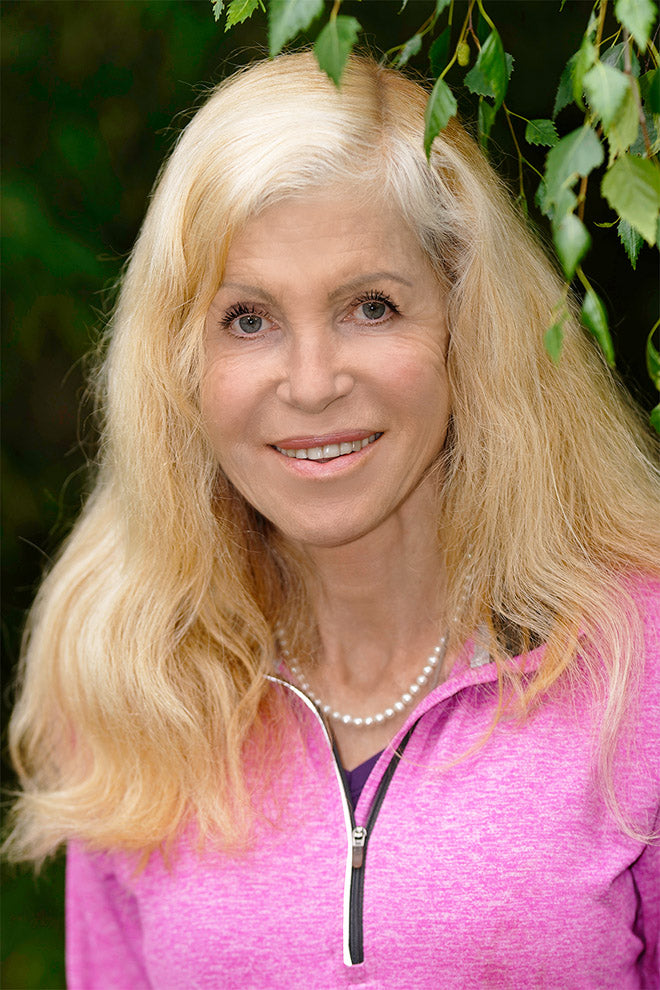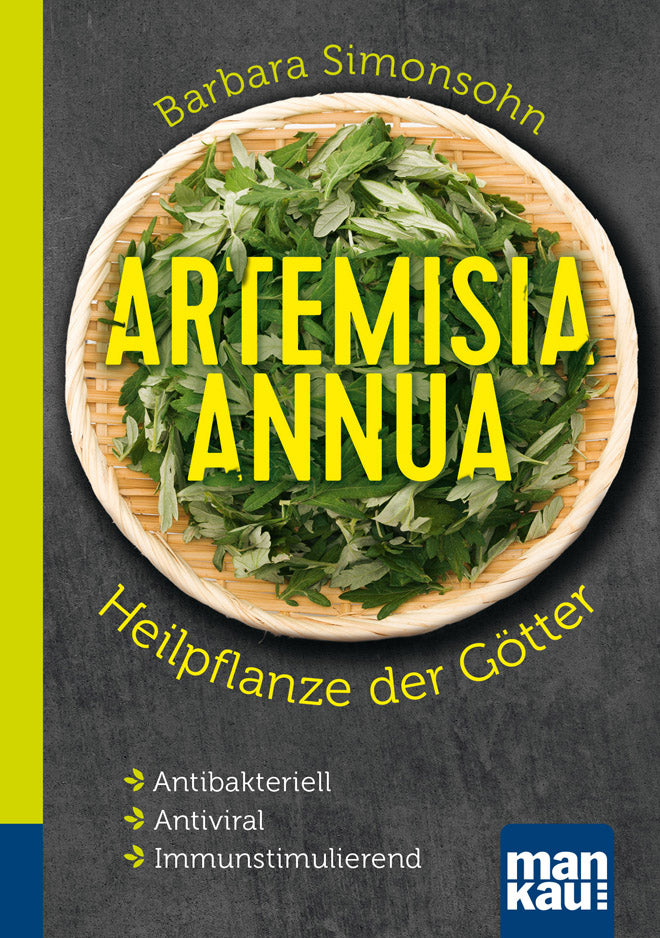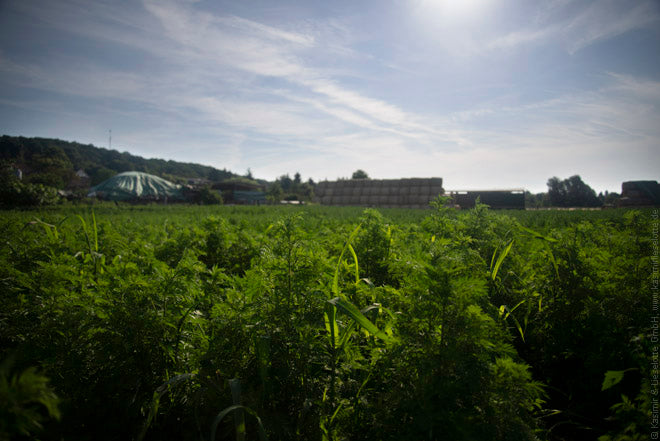
Interview with Barbara Simonsohn: “Our industrial food is causing us to starve in full pots – superfoods like baobab are helping us!”
Interview with Barbara Simonsohn: “Our industrial food is causing us to starve in full pots – superfoods like baobab are helping us!”
"Superfoods withstand adverse environmental influences without human intervention, protect themselves naturally from pests and fungi and have adapted optimally to their environment. They pass these properties on to us humans. They also protect us from viruses, pathological bacteria and fungi, and their density of vital substances nourishes our cells optimally. In this way, baobab can compensate for nutrient deficiencies that have arisen in our country due to incorrect breeding goals and depleted soils." Health expert Barbara Simonsohn , author of the compact guide " Baobab ", explains in an interview what a valuable contribution the African baobab tree can make to our health and beauty. In her opinion, the superfood has the same effect on our organism as "a long-awaited warm summer rain falling on parched land."
Baobab, the monkey bread tree, is considered the symbol of Africa and a true all-rounder when it comes to health. What was your first encounter with the African “pharmacy or miracle tree”?
Barbara Simonsohn: I first encountered the baobab 19 years ago in Kenya. I was on safari there with my children. In the Masai Mara National Park in the north of the country, we spent the night in a lodge after a fulfilling day in which we had seen cheetahs, elephants and lions. In front of this lodge stood an ancient baobab tree. It had shed all its leaves due to the dry season and looked like a prehistoric animal with its furrowed, enormous trunk with countless holes and its spindly, grey branches reaching up into the sky. I sat down at its feet, its trunk, leaned against it and meditated with my eyes closed. Suddenly it was as if I had been hit by an electric shock: this tree looked dead, but it was full of life, I felt it. Its power was transferred to me and I felt like I was in contact with my heritage: Africa, the cradle of humanity. The fascination of this tree has captivated me ever since and has never let go.
Leaves, fruits and seeds have been used as staple foods and medicine for thousands of years. Why is baobab still an insider tip in this country and how can that be changed?
Barbara Simonsohn: To be honest, I don't know exactly. Baobab fruit powder has long been a popular tip for smoothies in Hollywood: for beautiful skin and good digestion, for beauty and health. In Great Britain, baobab products are available in every supermarket. In this country, baobab is still an insider tip and is only available in organic shops or online. Many people have no idea that this tree, which most people know from "The Little Prince", has medicinal properties and produces huge fruits. Just as it is for the monkeys of Africa today, the baobab was a kind of staple food for early humans and also a medicinal tree. Today, there is the paradoxical situation that the value of the baobab is declining in Africa - small trees were given away in a nursery and hardly anyone wanted them; Western industrial food is "in" especially in the cities - but in the West it is increasing. I am therefore optimistic that, via increasing demand in industrialized nations, Africans will also appreciate their "tree treasure" more. So far, only the fruit powder has been approved as a "novel food" under the Novel Food Regulation in the EU. I hope that there will soon be initiatives to also recognize the leaves and seeds as food. The leaves must of course be harvested sustainably. If my book can make a small contribution to making the qualities of this amazing tree better known, it will have served its purpose. With my Afa algae book, my Stevia book and my book on Chia, I was able to start a small movement. Perhaps I can also succeed in doing this with this compact guide - I hope so!
They also refer to tropical fruits such as baobab as “superfoods”. What does that mean and what makes the fruit of the pharmacy tree so valuable?
Barbara Simonsohn: A "superfood" is an original food with a high density of vital substances. Superfoods come from plants that are not cultivated or bred according to external criteria, but have retained their originality. They were often "discovered" just a few years ago, such as Afa algae, Moringa or Chia. Many of these superfoods grow wild, left to themselves. According to Professor Fritz-Walter Popp, wild plants have a much higher biophoton storage capacity or ordering power than cultivated plants. Without human intervention, they withstand environmental influences, protect themselves naturally from pests and fungi and have adapted optimally to their environment. They pass these properties on to us humans. They also protect us from viruses, pathological bacteria and fungi. Their density of vital substances nourishes our cells optimally. We are starving because of our industrial food from full pots. If the body never gets what it really needs, it always wants more and yet is never satisfied. Obesity, metabolic syndrome and ultimately type II diabetes and heart problems are the consequences. Baobab is a superfood that compensates for nutrient deficiencies that have arisen in our country due to incorrect breeding goals and depleted soils. We also notice this psychologically: Baobab fruit powder has a mood-lifting effect on me. When we eat superfoods like baobab, it is like a long-awaited warm summer rain falling on parched land. People breathe a sigh of relief.
Baobab trees still grow wild today just as they did millions of years ago when they were created. Why does this benefit modern eating habits?
Barbara Simonsohn: Our genes are mainly from the Stone Age. With the ancient food baobab we satisfy our cells' needs for an optimal nutrient composition. Vitamins, proteins, trace elements, enzymes, fruit acids and fiber are concentrated in the fruit powder of the baobab tree. Our body can only absorb the vital substances of naturally growing plants optimally in concentrated form, ie in the form of the whole plant; this is referred to as "bioavailability". The special thing about the baobab tree: the tree has already created a completely natural concentrate by removing the water from its fruit. Less processing is not possible!
The healing effects of the baobab, which have long been known in folk medicine, are gradually being confirmed by scientific studies. For which ailments can baobab be used prophylactically and therapeutically?
Barbara Simonsohn: Baobab has a broad spectrum of effects. The intestine and the microbiome are increasingly becoming the focus of public attention, and there was just a cover story about it in "Focus". The intestine is the root of the human plant. If the intestine is healthy, so is the human; if the intestine is sick, so is the human. Intestinal problems such as chronic intestinal inflammation are increasing and our intestinal flora is becoming impoverished. This is where baobab helps. The growth of healthy, physiological intestinal bacteria is stimulated and the growth of pathological germs is slowed down. But baobab is good for a lot more. The antioxidants protect us from the attack of free radicals. Baobab has an ideal amino acid profile and its polyphenols protect us from viruses and bacteria. With baobab we can also eat simple carbohydrates again without having to fear the "sugar swing"; baobab is therefore used to prevent diabetes. The baobab tree also protects the heart, helps with weight management and provides us with the vital substances that protect us from burnout. Baobab is also the ideal beauty and skin care product inside and out. Everyone can benefit from this miracle tree!
Those who use baobab products are not only doing something for their health and beauty, but are also supporting middle-class structures in Africa. How can this development be further promoted and where is the best place to get such products?
Barbara Simonsohn: Climate change is particularly noticeable in the global south, even more so than here. If people don't have enough to eat or no prospect of a job, they emigrate. We would do the same in their situation. Buying baobab products means giving people in Africa a future. There are so many large old baobab trees in Africa that even if there was a baobab boom, demand could be met. However, it is advisable to buy from companies that are committed to fair wages - fair trade -, to local processing for quality assurance - short distances -, to "wild collection" or "organic" certificates and to sustainability. I see the opportunity for baobab products as similar to that for stone pine: Professor Maximilian Moser from the Medical University of Graz found in his measurements that the wood of the Alpine stone pine improves the quality of sleep when the bed is made of this material. A real boom then began, and many hotels have beds and rooms made of stone pine. Moser's research results led to the previously neglected Alpine stone pine being planted again on a large scale. Professor Moser also saved the carpentry trade in the Alps. I hope that the baobab will also gain a similar level of appreciation. In my opinion, it more than deserves this.
Book tip:
Barbara Simonsohn: Baobab. Compact guide . The healing fruit of the apothecary tree: Applications for your health - tips for the baobab kitchen - cosmetics to make yourself. Mankau Verlag 2021, paperback, full color, 11.5 x 16.5 cm, 125 pages, 9.99 euros (D) / 10.30 euros (A), ISBN 978-3-86374-614-8.
Link recommendations:
More information about the book “Baobab”
To the reading sample in PDF format
More about the author Barbara Simonsohn
Our social networks – for questions, criticism, suggestions











